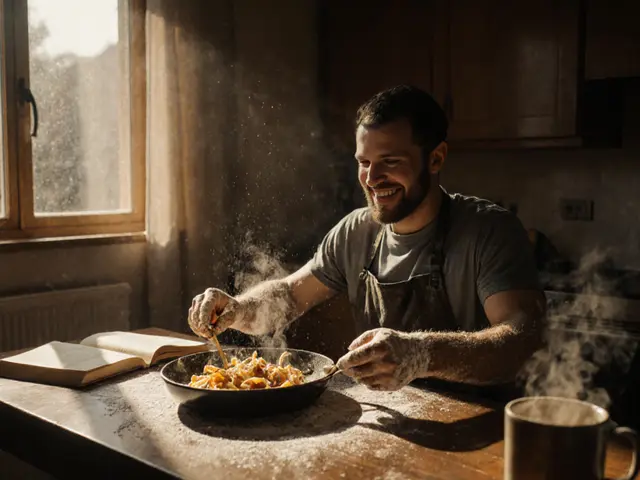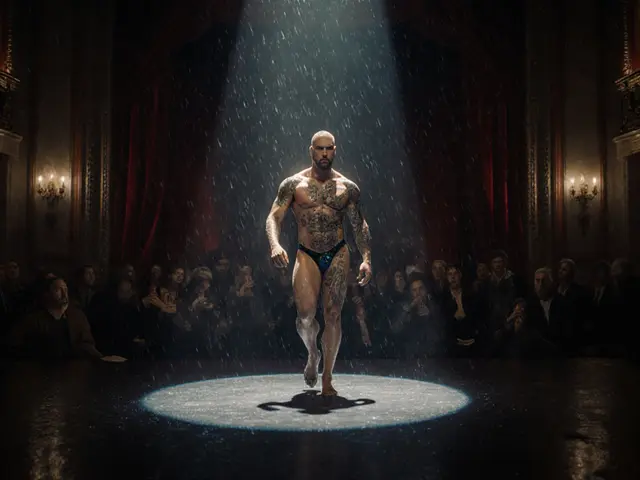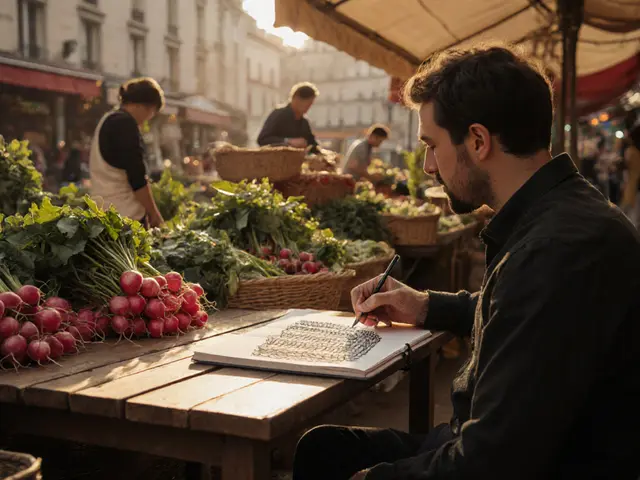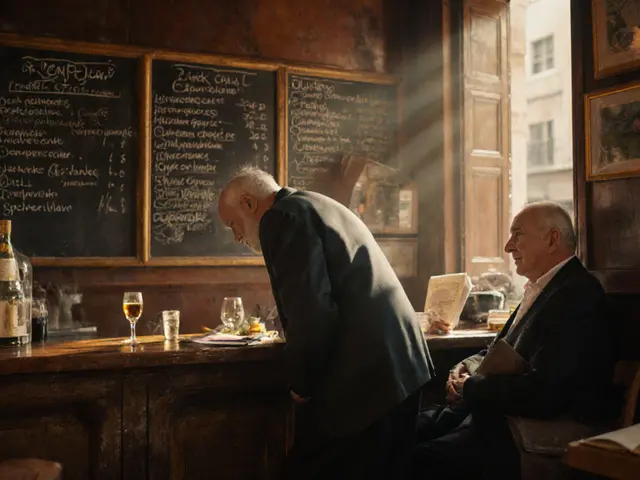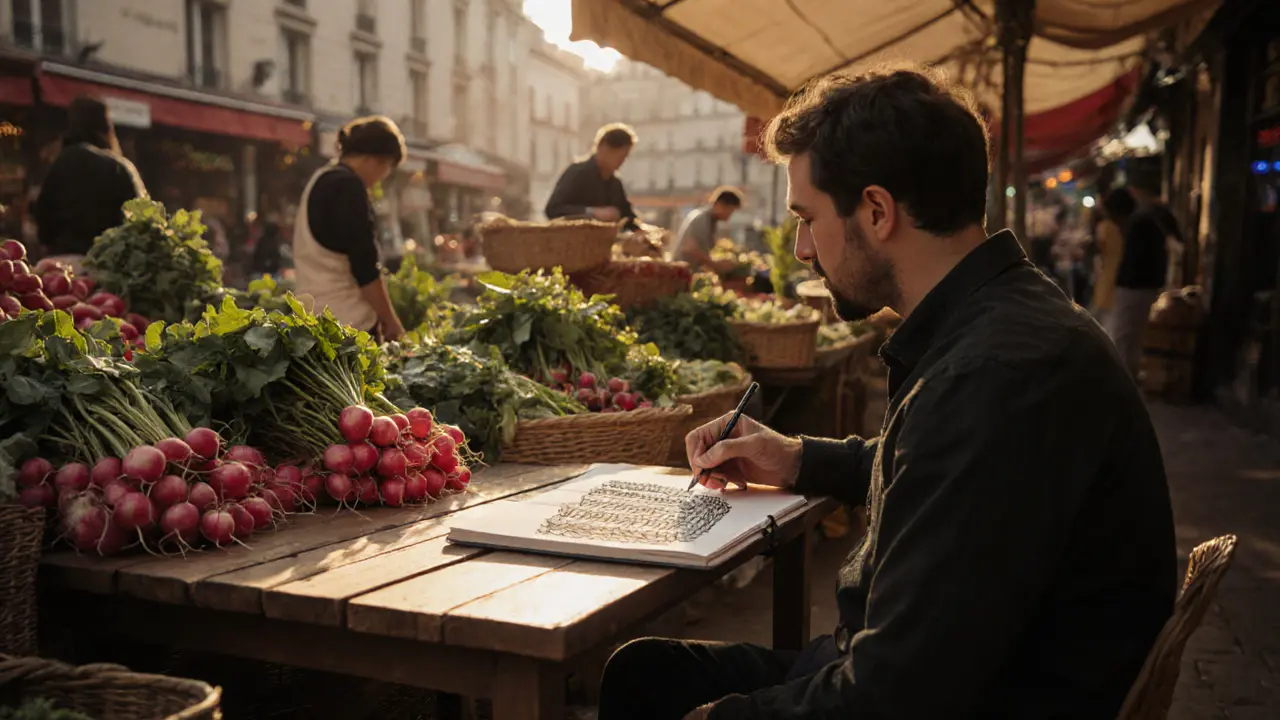
Sebastian Barrio didn’t move to Paris to become a designer. He moved there because he was broke, lonely, and tired of the same four walls in Madrid. What he found in the city’s narrow streets and quiet cafés didn’t just change his life-it rebuilt his entire sense of what work could mean.
Paris Didn’t Give Him a Job. It Gave Him a Language.
When Sebastian arrived in 2018, he spoke barely any French. He didn’t know how to ask for a coffee without pointing. But he quickly learned that Paris doesn’t reward loudness. It rewards observation. He started spending mornings in the Marché des Enfants Rouges, watching how vendors arranged their produce-not just for looks, but for rhythm. How a single bunch of radishes was tilted just so to catch the light. How a basket of herbs was layered to tell a story before anyone spoke.
That’s when it clicked. He wasn’t just looking at food. He was seeing design. The same patience, the same quiet confidence, showed up in the way tailors folded fabric in Saint-Germain, how bookbinders in the 5th arrondissement pressed leather with their thumbs, not machines. Paris taught him that craftsmanship isn’t about speed. It’s about presence.
The Studio That Wasn’t a Studio
He didn’t get hired by a fashion house. He didn’t win a scholarship. He got a corner of a shared apartment in Belleville, where a retired textile artist named Claudine let him use her sewing machine in exchange for helping her carry groceries. For six months, he didn’t make a single sale. He made 17 prototypes. Each one was different. One was made from old French army blankets. Another used discarded silk scarves from a closed boutique on Rue du Faubourg Saint-Honoré.
Claudine never told him what to do. She’d just sit in her armchair and say, ‘That’s not wrong. But it’s not yours.’ He didn’t understand it then. Now he knows: Paris doesn’t want you to copy its style. It wants you to steal its soul.
How the City’s Silence Became His Soundtrack
Most people think Paris is loud. It’s not. It’s full of quiet spaces where things happen slowly. The 7 a.m. baker who wipes flour off the counter with a cloth, not a rag. The librarian who returns your book with a note on the inside cover: ‘You’ll like this one next.’
Sebastian started recording these moments-not with his phone, but with sketches. He drew the way the light fell on a woman’s coat as she waited for the metro. The angle of a man’s scarf tied just loosely enough to look careless, but perfectly balanced. These became the templates for his first collection: ‘Les Silences de Paris.’
It wasn’t shown at Paris Fashion Week. It was shown in a basement beneath a laundromat in the 13th, lit by a single bulb. Five buyers came. Two bought. One of them was from a small Kyoto boutique. They still carry his pieces today.

The Myth of the ‘Parisian Aesthetic’
People say Paris has a ‘look.’ They mean black turtlenecks, berets, and oversized coats. That’s not Paris. That’s a movie set.
Real Parisian style is about contradiction. A woman in a tailored wool coat carrying a plastic bag full of baguettes. A teenager in ripped jeans with a vintage 1970s Hermès scarf tied around her wrist. A man in a thrifted suit, but his socks are mismatched and bright.
Sebastian’s designs reflect that. A jacket with hand-stitched seams so fine they look like a mistake. A skirt made from recycled train tickets, layered like pages of a diary. He doesn’t sell ‘French elegance.’ He sells quiet rebellion. The kind you only notice if you’re paying attention.
Paris Didn’t Make Him Famous. It Made Him Honest.
He still doesn’t have a big brand. No Instagram influencer collabs. No celebrity endorsements. But his pieces are in 12 museums now, including the Musée des Arts Décoratifs. Why? Because they don’t try to impress. They try to last.
He doesn’t follow trends. He follows time. He works with artisans in Normandy who still weave wool the way their grandfathers did. He uses dyes made from onion skins and walnut shells. His production runs are tiny-sometimes just five pieces. But each one comes with a handwritten note about where the fabric came from, who made it, and what they were thinking when they did.
That’s what Paris gave him: permission to be slow. To be small. To be real.
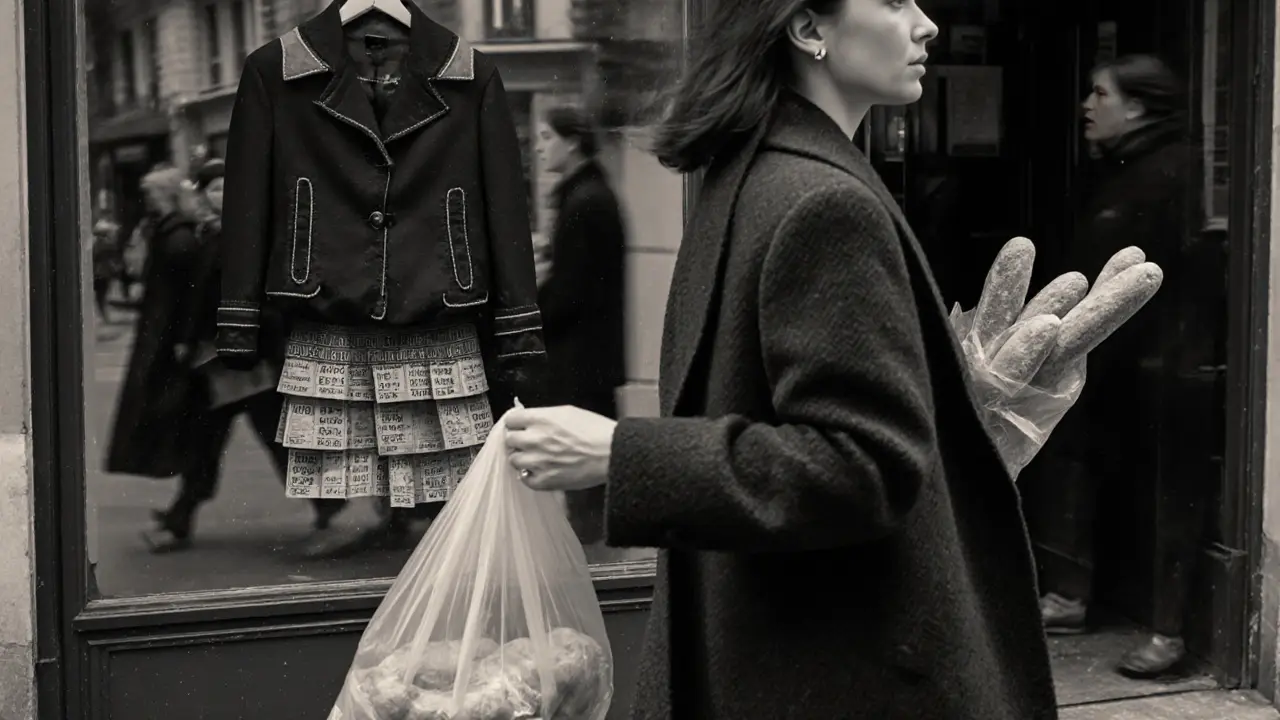
What Paris Taught Him That No School Could
Design school taught him how to use a pattern cutter. Paris taught him how to listen.
He learned that beauty isn’t in the final product. It’s in the process. The way a seamstress hums while she sews. The way a leatherworker pauses before he cuts, just to feel the grain. The way a shopkeeper remembers your name after three visits.
He now teaches workshops in Paris-not to students, but to people who’ve lost their way. A retired nurse who wants to make quilts. A taxi driver who sketches cars in his notebook. A woman who lost her job and started mending clothes for strangers.
‘You don’t need a studio,’ he tells them. ‘You need a reason.’
He Still Lives in the Same Apartment
Sebastian hasn’t moved out of that Belleville flat. The sewing machine is still there. Claudine passed away in 2022. He keeps her armchair. Sometimes, when he’s stuck on a design, he sits in it. And waits.
Paris didn’t give him fame. It gave him patience. It didn’t give him money. It gave him meaning. And that’s the only thing that lasts longer than a good coat.
Did Sebastian Barrio study fashion in Paris?
No. Sebastian never enrolled in a fashion school. He learned by watching, working with local artisans, and making mistakes in his apartment. His education came from Claudine, the retired textile artist who let him use her sewing machine, and from the quiet rhythm of Parisian daily life.
What is Sebastian Barrio’s design style called?
He doesn’t label it. But critics describe his work as ‘quiet craftsmanship’-a blend of slow fashion, upcycled materials, and deeply personal storytelling. His pieces avoid trends and instead focus on texture, memory, and the history embedded in everyday objects.
Where can you buy Sebastian Barrio’s clothing?
His pieces are sold through a handful of small boutiques in Kyoto, Berlin, and Lisbon, and occasionally through pop-up exhibitions in Paris. He doesn’t sell online or through mass retailers. Each garment comes with a handwritten note about its origin and the person who made it.
Is Sebastian Barrio French?
No. Sebastian Barrio is Spanish, born in Madrid. He moved to Paris in 2018 and has lived there since. His work is deeply influenced by French craftsmanship, but his perspective remains rooted in his Spanish upbringing and his outsider’s view of Parisian culture.
Why is Paris so influential for creatives like Sebastian?
Paris doesn’t force creativity-it protects it. The city has spaces where time moves slower: small ateliers, neighborhood markets, quiet courtyards. These places allow artists to experiment without pressure to perform or sell. For someone like Sebastian, who values process over product, that space is everything.






